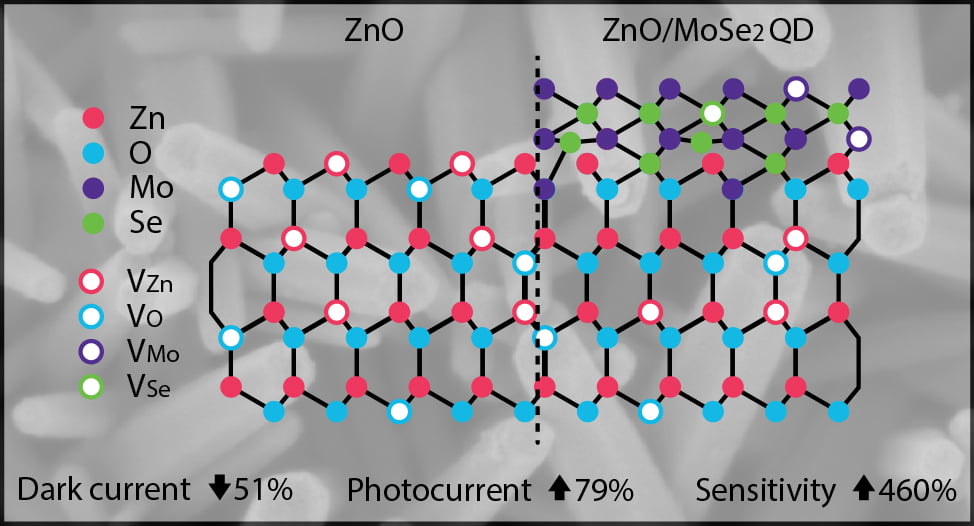MoSe2 Quantum Dots Enhance the Performance of ZnO Nanostructure-Based UV Photodetectors
Nur Ajrina Putri, Muhammad Adam Dwiputra, Suci Mufidah Winata, Isnaeni, Riski Titian Ginting, Ferry Anggoro Ardy Nugroho, Vivi Fauzia
ACS Applied Nano Materials 2024, 7, 3835-3842

Zinc oxide (ZnO) nanostructures are extensively used as active materials for ultraviolet (UV) photodetectors, but the high dark current arising from intrinsic defects limits their performance. An emerging strategy to alleviate such problems includes the formation of heterostructures with transition metal dichalcogenides (TMDs), which until today have been limited to their two-dimensional structures, leaving the superior physicochemical properties in their quantum dot (QD) configuration untapped. Here, we devise a strategy to reduce surface defects by decorating ZnO nanorods with MoSe2 QDs fabricated through pulsed-laser ablation, using a facile spin-coating method. Through various surface and optical characterizations, we confirm the formation of heterostructures, wherein MoSe2 reduces the number of vacancy defects in the ZnO. As a result, when used as a UV photodetector, the heterostructures exhibit a simultaneous 51% decrease in dark current and 79% increase in photocurrent, i.e., a 4-fold sensitivity compared to the pure ZnO counterpart. Our study presents a strategy to enhance UV photodetector efficiency by utilizing metal oxide/quantum dot heterostructures produced through a facile method. In a broader context, it underscores the efficacy of quantum dot-based heterostructures in optimizing optoelectronic devices.
